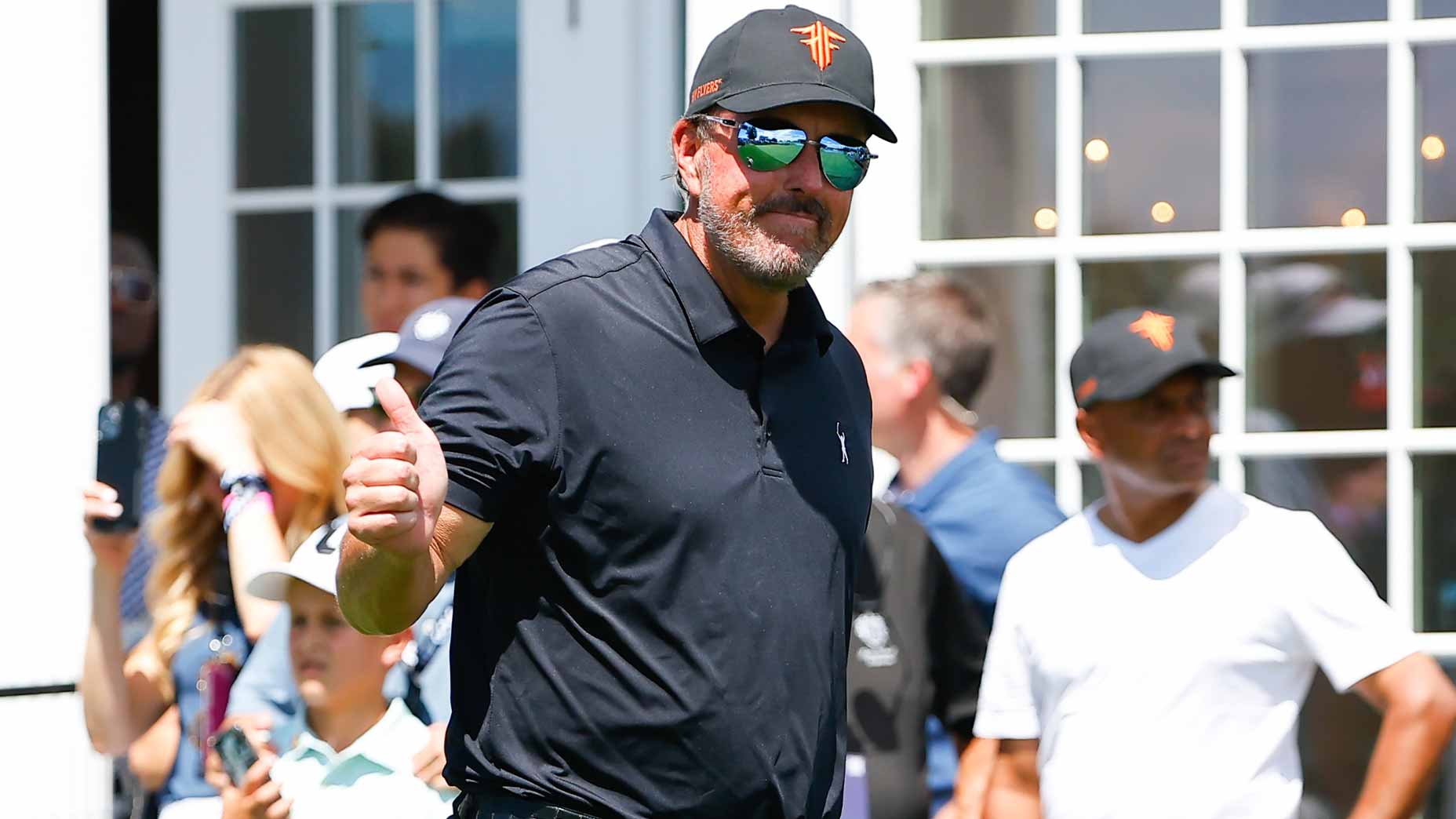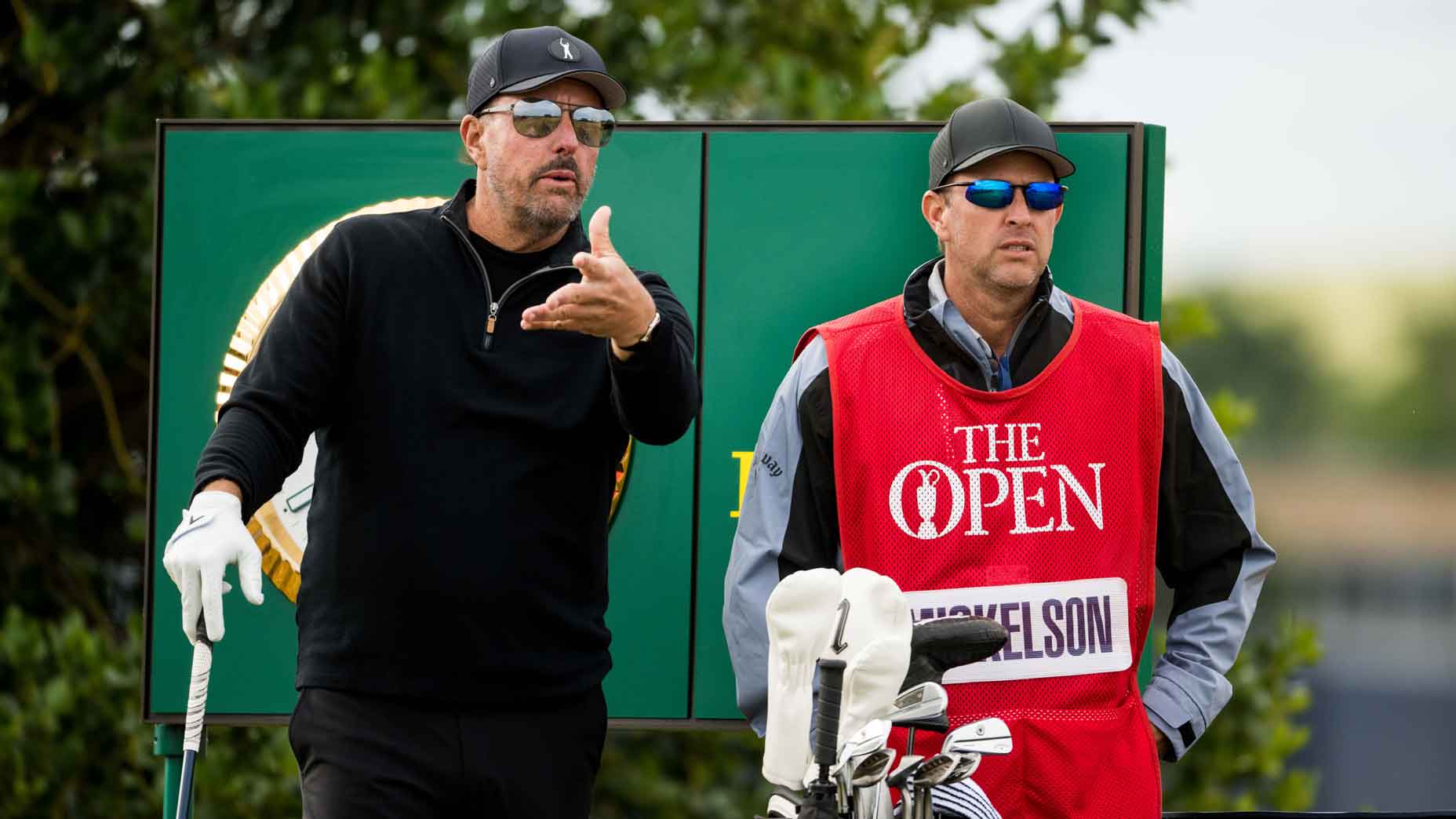Over the first few months of his LIV Golf career, Phil Mickelson has been great for headlines … and not much else.
The six-time major champ has struggled mightily in three starts since joining the upstart league, carding a cumulative score of +26 in 144 holes played. In two starts in LIV’s 48-man, no-cut events, he has finished no better than 34th. If his finish holds on Sunday at this weekend’s event at Trump Bedminster, Mickelson will have played just one of nine LIV rounds under par.
More than his struggles in any one event, though, Mickelson’s game has looked generally disjointed, uncomfortable, and out of sorts. Lefty has looked zapped of his charisma since returning from his self-imposed break from pro golf, and his golf game has looked much the same.
And yet, Phil insists, his on-course malaise has nothing to do with his feelings about the new league, which are still in full bloom. In fact, he’s already spotted two ways in which LIV “works” for pro golf, and perhaps most surprisingly, neither of them have to do with money.
“The reason why I’m so high on LIV Golf is it addresses the two areas that for the 30 years I’ve played the Tour, they have tried and struggled,” Phil told reporters earlier this week.
Those areas, according to the $200 million man, are international growth and intergenerational growth.
‘Let it go, dude’: Phil Mickelson gets heated while being questioned about LIVBy: Nick Piastowski
On the topic of international growth, Mickelson pointed to LIV’s schedule and its contract structure. Unlike the PGA Tour — in which players generally have the freedom to pick and choose which events they’re willing to play — LIV’s contracts require players to compete in every event, ensuring a consistent level of field strength each week. With the series planning to visit four countries in 2022 (and a host more in the years to come), Mickelson figures that LIV will have better success attracting international audiences than the efforts that have come before it.
“LIV has a chance to bring professional golf throughout the world,” Mickelson said. “Players here, when they sign up, we receive a ton of money, and we give up our schedule and we commit to wherever they hold the events we’re going to go and we’re going to be there, and then they have the ability to move professional golf throughout the world. I think that’s a really big thing as we try to grow the game of golf throughout the world. We might not feel it here in the United States, but globally I think that’s going to be a big impact.”
To that end, Mickelson isn’t wrong: LIV does have broader international goals than the PGA Tour, and it also has the means to make sure its best players travel internationally. But international growth also requires an element of international interest, of which there has not been much in LIV’s early days. Tickets were available for as cheap as $1 for Friday’s opening round at Bedminster, and baskets of free tickets are readily available for most LIV events. All this is to say nothing of the DP World Tour, which has invested heavily in finding growth in many of the same markets now being pursued by LIV.
Still, the goal behind expanding golf’s borders is clear: to raise the profile of the sport with a new audience. Not coincidentally, the same can be said for Mickelson’s other LIV proof of concept, intergenerational growth.
“The other thing is we as a game and sport, the viewership has gone up five years to the average age, I believe, of 64,” Mickelson said. “We have to target younger generation.”
(Ed. note: Updated golf viewership data has not been published in several years. Mickelson is referencing a 2017 study from Sports Business Journal.)
As for how LIV is going to reverse golf’s trendline toward older viewership, Mickelson offered a few arguments.
“One, it’s not a 12-hour day, having to watch golf all day. You’ve got a four-and-a-half-hour window,” he said, referring to the league’s shotgun start format that condenses play into a single broadcast window.
“Second, when I think a streaming partner comes about, I think it’s going to revolutionize the way golf is viewed, because you’ll have no commercials and you’ll have shot after shot after shot,” he continued. “It will capture that younger generation’s attention span. We’ll open up a lot of opportunities to get the younger generation, which again, for 30 years we’ve tried to do and it’s gone the other way.”
LIV notably does not have a streaming partner, nor does it have any prominent sponsors to date. Its broadcasts are currently streamed for free (and commercial-free) on YouTube and Facebook. While a partnership with a subscription-based platform like Amazon Prime could allow the league to broadcast commercial-free, even that would seem unlikely, given that commercials are a primary revenue source for many subscription-based platforms.
But a streaming partner of any kind could help LIV push down golf’s overall viewership age, particularly considering the league’s focus on courting younger fans over the span of the last several months. The hard part would seem to be finding a partner willing to do business at a level that would give the Saudi-backed league the legitimacy (and revenue) it seeks.
Ultimately, these are issues that LIV’s leadership, and not necessarily its players, will face on the path to long-term growth. Even if the league hasn’t convinced golf’s stakeholders it’s here for the long run, it seems to have gotten that message through to its most prominent player — or maybe that’s just the nine-figure signing bonus still clouding his judgment.











